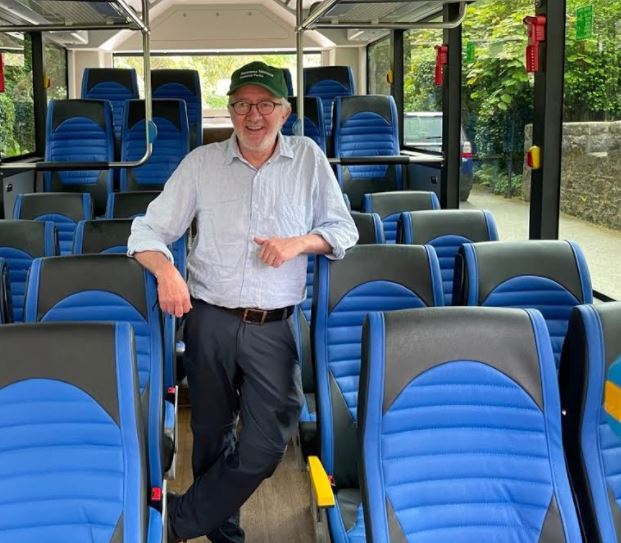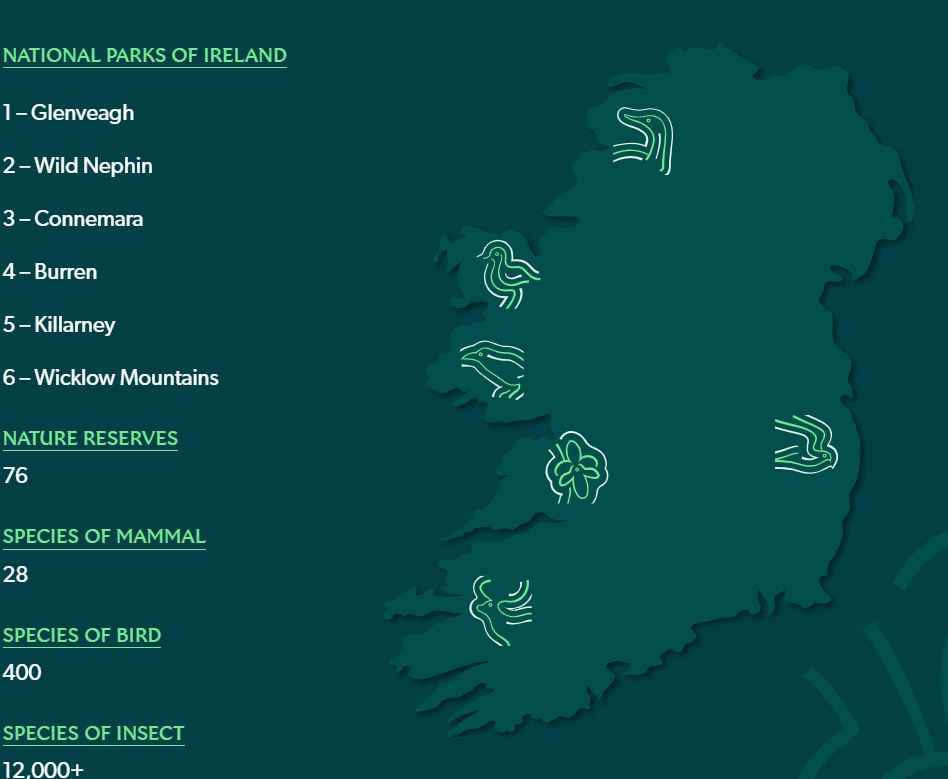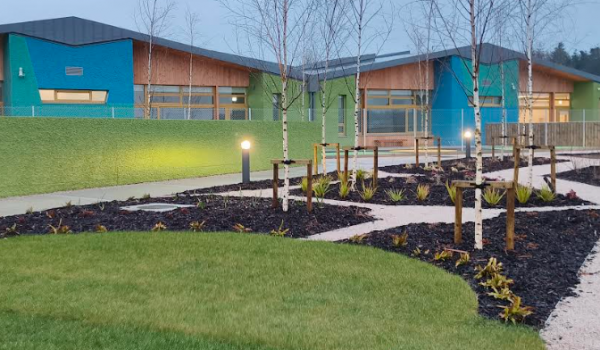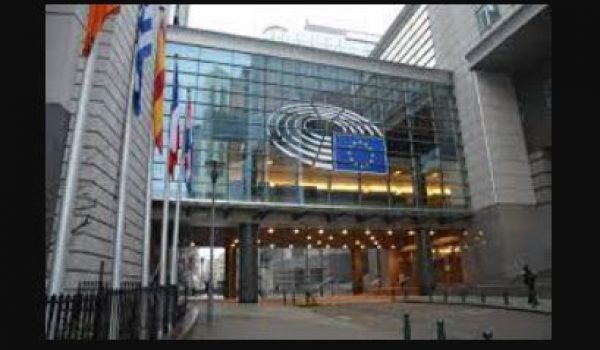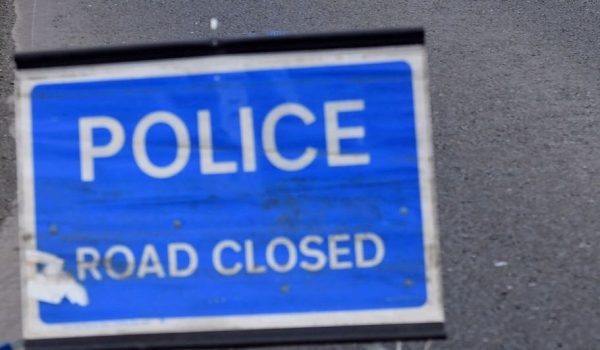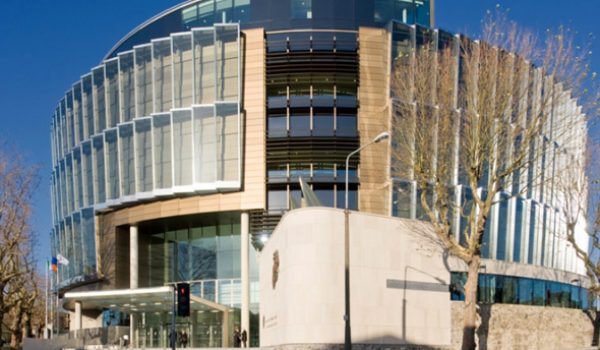Junior Minister Malcolm Noonan last evening visited visited Glenveagh National Park, where he launched the new Electric Shuttle Bus and introduced a new website for the six National Parks under his remit.
Minister Noonan, who has been visiting national parks and wildlife reserves around the country, spent yesterday in Donegal with the launch iof the electric bus service at the centre of his visit to Glenveagh.
He said he is particularly happy that the decision to bring in an electric bus service stemmed from the suggestions of children who visited the park over the past year.
The two electric buses, with a passenger capacity of 26 seats and standing room for another 22 people, replace the existing diesel buses which used to operate between the Visitor Centre and Glenveagh Castle prior to the Covid-19 crisis.
Minister Noonan also paid tribute to educational staff of the National Parks and Wildlife Service who worked to ensure that Glenveagh became the first National Park to become a Leave No Trace Accredited Training Centre. It is also the only centre of its kind in the North-West.
Minister Noonan also launched a new website, www.nationalparks.ie, and paid a visit to the Inch Wildfowl Reserve.
Release in full –
The Minister of State for Heritage and Electoral Reform, Malcolm Noonan TD, today (Monday July 19) visited Donegal and officially launched the electric shuttle bus service in Glenveagh National Park and, while there, he introduced the new website for the 6 National Parks under his remit.
Minister Noonan has been visiting national parks and reserves regularly in recent week with visits planned over the summer months. He was delighted that the electric bus service for visitors to Glenveagh National Park stemmed from suggestions of children who visited the park over the past year.
“Although the shuttle service is operating at a reduced capacity due to Covid-19, I sincerely hope that it coming into service signifies the beginning of a much-anticipated post-covid recovery for the Park and the locality in general. The fact that two new electric buses are being added to the fleet and in use marks not only a return to some sort of normality for both staff and visitors to the Park, but also a step forward in terms of caring for Glenveagh’s natural beauty”.
The two electric buses, with a passenger capacity of 26 seats and standing room for another 22 people, replace the existing diesel buses which used to operate between the Visitor Centre and Glenveagh Castle prior to the Covid-19 crisis. The introduction of the electric buses is part of the Department’s response to climate change, and takes away the noise and fumes of the diesel buses and ultimately improves the whole visitor experience for those travelling on the bus as well as those walking or cycling within the Park. Apart from serving as shuttle buses, these electric vehicles have the potential to be used as a Park-and-Ride Service, should it be introduced in the Park in the future.
This new initiative in Glenveagh National Park has been guided by the Tourism Interpretative Masterplan (2018) (and funded under the Rural Regeneration and Development Fund), which recommends adopting sustainable and environmentally-friendly transport options for Ireland’s National Parks. Similar ideas have been expressed by the younger residents of the wider Glenveagh area who, in response to their Learning Day in the Park with the Educational staff of Glenveagh National Park, suggested the use of electric buses as one of the measures to protect the wildlife.
The Minister commended the educational work carried out by the NPWS staff: “It is truly inspiring to see how the educational programmes run by the NPWS bring children closer to nature and help them release their creative thinking potential”.
The introduction of electric buses and the project to overhaul signage in the National Parks, of which a new nationalparks.ie website forms part, was made possible through what Minister Noonan terms “a fruitful collaboration” between a number of state agencies. Thus, 75% of these projects are funded by the Department of Rural and Community Development, from the Rural Regeneration Development Fund, while the remaining balance is covered by the National Parks and Wildlife Service and Fáilte Ireland, as part of their Strategic Partnership.
Minister Heather Humphreys, who’s Department funded the majority of the cost of the buses and signage project, commented: “I am delighted that these sustainable transport options are now available to the public, thanks to funding from the RRDF. I am impressed with the new website and plans for the signage overhaul for the Parks, to promote visitor awareness of how we all can protect and enhance our care of nature. Due to the collaborative nature of this project, a number of important objectives have been met, namely, nature conservation, visitor experience enhancement and importantly rural development”.
Orla Carroll, Director of Product Development at Fáilte Ireland added “Fáilte Ireland is pleased to work with our strategic partner the National Parks and Wildlife Service in developing and enhancing top-class visitor experiences at Glenveagh National Park. Glenveagh welcomes about 200,000 visitors a year, many of whom will be touring along the Wild Atlantic Way. Glenveagh’s spectacular castle and landscape, and enthralling cultural heritage play a key role in motivating visitors to visit Donegal and spend longer here. Today’s launch of new electric buses is a particularly important expression of the work of the strategic partnership as it aims to enhance the visitor experience while respecting the park’s core conservation and heritage values, helping to preserve the beautiful natural environment, and reducing noise and emissions.”
New Look
While in Glenveagh National Park the Minister took the opportunity to launch a new National Parks website – nationalparks.ie. It is part of a cohesive new look for Ireland’s six National Parks to be rolled out this year.
“Our parks are now all grouped under the National Parks banner, each identifiable by a signature species, and I would like to thank both the Department of Rural Community Development and Fáilte Ireland, and also ImageNow the service providers, who worked in close collaboration with my NPWS staff to conceive and forge the branding imagery for our National Parks and Nature Reserves. I am looking forward to the public seeing the fruits of these partnerships in new signage and more besides over the next year or so.”
The Minister also met staff and explored the rich and varied habitats and species that have the formed the Park. He paid tribute to educational staff of the NPWS who worked with Leave No Trace to ensure Glenveagh National Park became the first National Park to become a Leave No Trace Accredited Training Centre. It is also the only centre of its kind in the North-West.
The Minister then travelled to Inch Wildfowl Reserve where he met with more NPWS staff and discussed ongoing work in conservation management, community involvement, and development of visitor infrastructure of the Reserve. He was joined on this tour by his colleague, Charlie McConalogue TD, Minister for Agriculture, Fisheries and the Marine.
In concluding his visit to Donegal Minister Noonan said “I am always impressed by the work of the National Parks and Wildlife Service, none more so than today when I have seen once again, in such vitally important and idyllic places as Glenveagh National Park and Inch Wildfowl Reserve, their commitment to protecting our natural heritage and welcoming people to our parks.”
